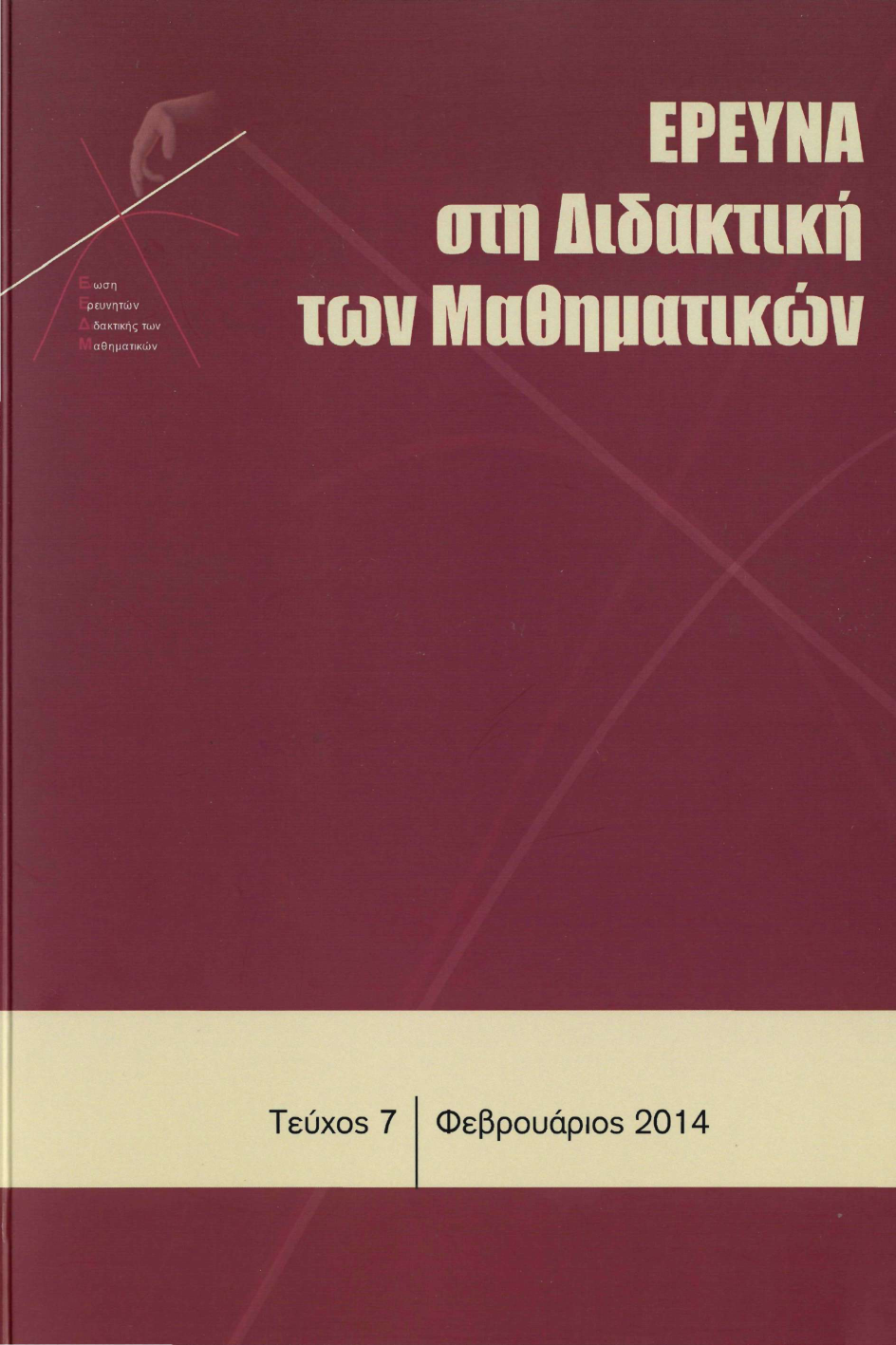ΑΡΙΘΜΗΤΙΚΗ ΠΡΟΣΕΓΓΙΣΗ Ή ΓΕΩΜΕΤΡΙΚΗ ΑΚΡΙΒΕΙΑ; ΑΥΘΟΡΜΗΤΕΣ ΑΝΤΙΛΗΨΕΙΣ ΔΩΔΕΚΑΧΡΟΝΩΝ ΠΟΥ ΑΓΓΙΖΟΥΝ ΤΗΝ ΑΡΡΗΤΟΤΗΤΑ
Resumen
Στην παρούσα εργασία εκτίθεται ένα διδακτικό πείραμα που διενεργήθηκε στην Πρώτη Γυμνασίου. Στο εν λόγω πείραμα διερευνάται το πρόβλημα του διπλα σιασμού του τετραγώνου, το οποίο εμφανίζεται για πρώτη φορά στον πλατωνικό διάλογο «Μένων». Τα ευρήματα της έρευνας σκιαγραφούν τον τρόπο με τον οποίο μια ανοικτή κατάσταση προβληματισμού μπορεί να ενεργοποιήσει τους μαθητές ώστε να αναπτύξουν πολυποίκιλες ιδέες και στρατηγικές. Ειδικότερα, κατά τη μαθηματική διαμάχη στη σχολική τάξη με την προβολή των αυθόρμητων πρωτο γενών αντιλήψεων των μαθητών, αναδύεται η αντίθεση μεταξύ του γεωμετρικού και του αριθμητικού τρόπου σκέψης που οδηγεί στην πραγμάτευση νοημάτων της ασυμμετρότητας και την βαρύνουσα προτίμηση τους προς τις γεωμετρικές προσεγγίσεις. Σε μια εποχή που η γεωμετρική κουλτούρα βρίσκεται σε παρακμή, ενώ κυριαρχεί η υπερβολική αριθμητικοποίηση, διδακτικές πρακτικές που τονί ζουν την ακρίβεια του γεωμετρικού μεγέθους θα μπορούσαν να υποστηρίξουν την κατανόηση της αρρητότητας.
Article Details
- Cómo citar
-
Κόσυβας (Giorgos Kosyvas) Γ. (2018). ΑΡΙΘΜΗΤΙΚΗ ΠΡΟΣΕΓΓΙΣΗ Ή ΓΕΩΜΕΤΡΙΚΗ ΑΚΡΙΒΕΙΑ; ΑΥΘΟΡΜΗΤΕΣ ΑΝΤΙΛΗΨΕΙΣ ΔΩΔΕΚΑΧΡΟΝΩΝ ΠΟΥ ΑΓΓΙΖΟΥΝ ΤΗΝ ΑΡΡΗΤΟΤΗΤΑ. Έρευνα στη Διδακτική των Μαθηματικών, (7), 9–48. https://doi.org/10.12681/enedim.18837
- Sección
- Άρθρα

Esta obra está bajo una licencia internacional Creative Commons Atribución 4.0.
Οι συγγραφείς των άρθρων που δημοσιεύονται στο περιοδικό διατηρούν τα δικαιώματα πνευματικής ιδιοκτησίας επί των άρθρων τους, δίνοντας στο περιοδικό το δικαίωμα της πρώτης δημοσίευσης. Άρθρα που δημοσιεύονται στο περιοδικό διατίθενται με άδεια Creative Commons BY και σύμφωνα με την άδεια μπορούν να χρησιμοποιούνται ελεύθερα, με αναφορά στο/στη συγγραφέα και στην πρώτη δημοσίευση.


